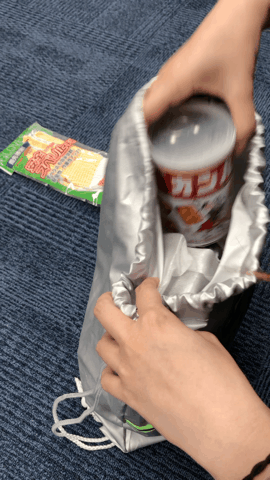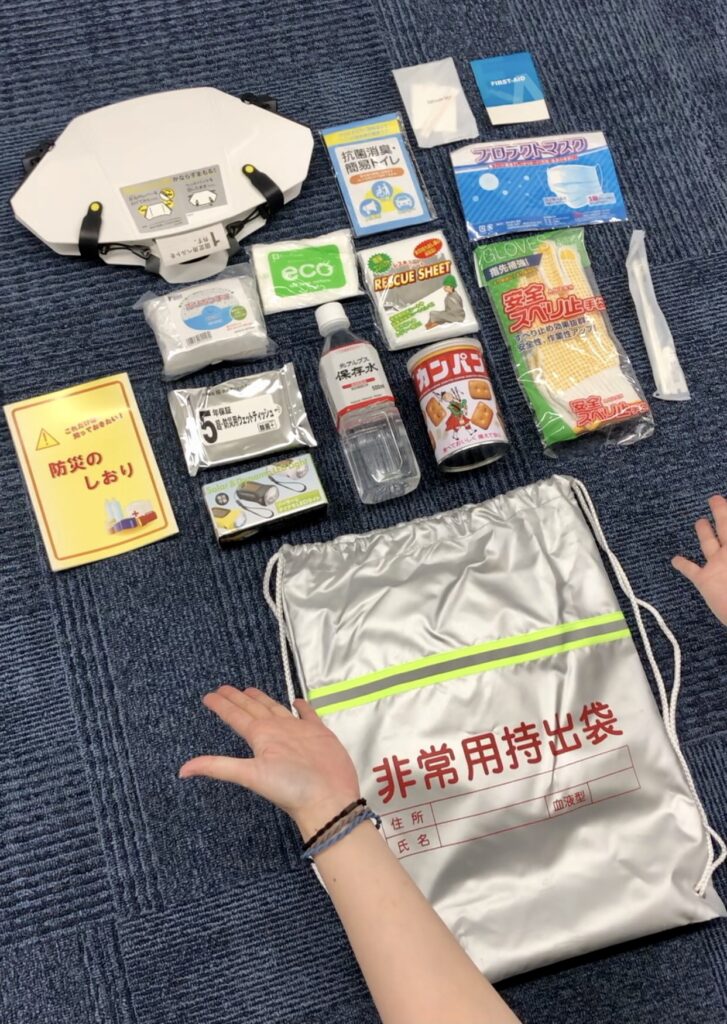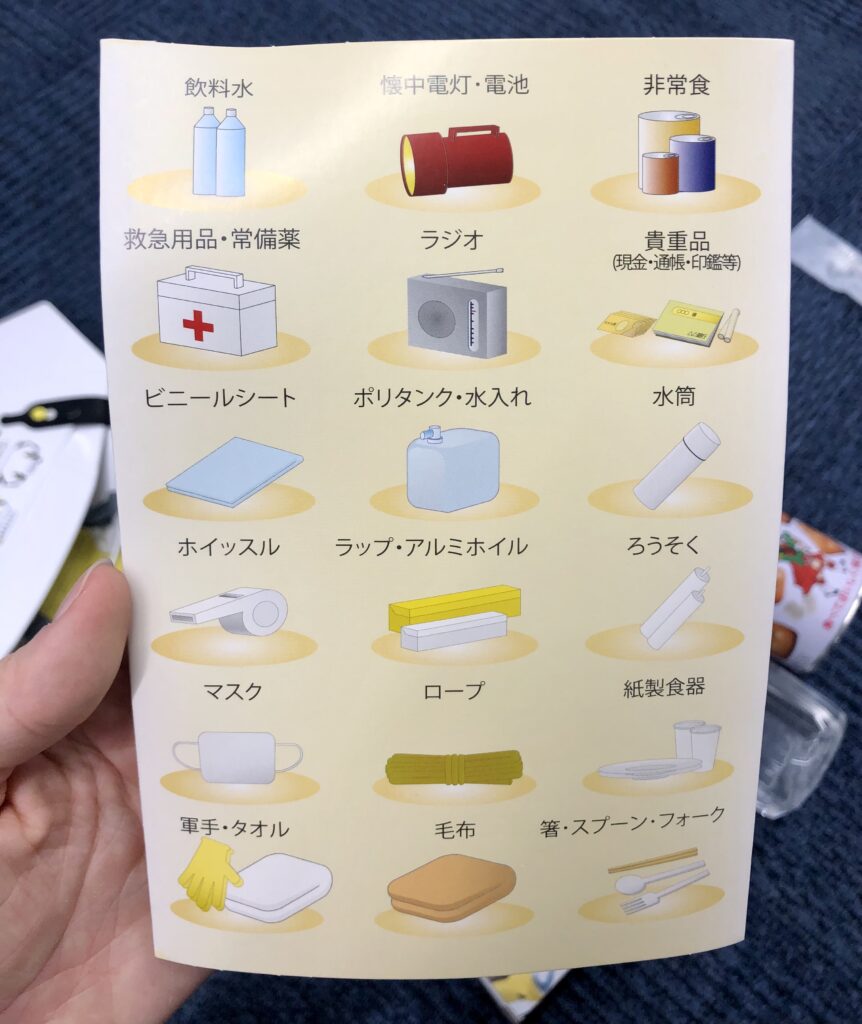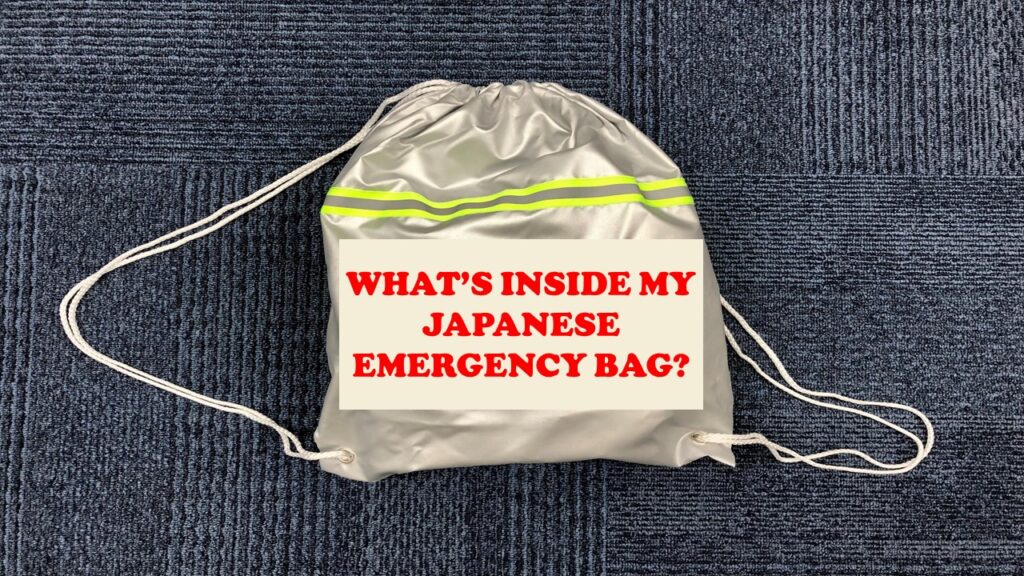
Japanese Emergency Backpacks: What’s Inside And Other Important Information
Why are Japanese Emergency Backpacks important? A few months after moving to Japan, Japan welcomed me with a magnitude 6 earthquake. It was the very first earthquake experience in my life and I had to learn the hard way about how important it is to be prepared for these things. Because earthquakes and other natural disasters are no stranger to Japan, Japanese people are very well prepared.
You will find that in most Japanese households, tucked away somewhere is a well organized emergency backpack. Something you can grab and run and and be able to survive on until help comes.
In this article, I will be showing you what an average Japanese Emergency Backpack looks like and what Japanese people put inside!
Gather your notes people, because we are about to tell you some extremely useful information that might save your life regardless of where you live!
⚡USEFUL LINKS⚡
Disaster Prevention Portal by The Ministry of Land, Infrastructure, Transport, and Tourism
Disaster Prevention Handbook For Foreigners
(By Ibaraki City, Osaka )
My Very First Earthquake Experience
It was a dark and cold spring night and I was sound asleep in my dorm room. It was my first year of college in Japan and everything was going super until I was shaken out of my sleep at around 1am. I woke up confused and scared and had no idea what to do with everything that was gong on around me. Dishes and sauces I had on my cabinets started falling off and breaking. My phone was screaming with a terrifying earthquake alarm. I wasn’t sure what was scarier, the alarm of the earthquake itself.
After the shake stopped, we were told to evacuate outside of the building immediately. I was terrified and confused so I just put on some pants, grabbed my phone and ran out of my room. We were led to a big parking lot where we sat and calmed each other down and waited for other updates.
Many aftershocks followed and we weren’t allowed to return to our room until announced safe. Before we knew it, we were sitting in the parking lot until morning. I was cold, hungry, thirsty, sleepy, and had less than 5% battery on my phone to update my family.
What I Learned From The Experience
Luckily that happened while I was living at the dorm in my university. We had people guiding us through the experience to make sure we were safe and were eventually provided with the basic things we needed such as water etc. But imagine if that happened while I lived alone downtown? Things would have been very different and I know I would have wished that I prepared an emergency bag.
After that experience I realized how important it is to always be prepared for the worst when it comes to natural disasters, especially in Japan. Japanese emergency backpacks are very good examples. You should have an emergency backpack filled with basic necessities near the exit of you door so that you can grab and run when you need to.
*My friend had a big bottle of fish sauce on his cabinet that fell down and broke during the earthquake. His room had carpet flooring so the fishy smell stayed in his room for the rest of the year. So place your things in a way that would create the least damage incase of an earthquake. Make sure you don’t sleep near anything that might fall and hurt you. And most importantly, tuck that fish sauce away.
What’s Inside Japanese Emergency Backpacks?
Are you curious to know what Japanese people put inside their emergency bags?
You can usually buy your very own emergency bags from shops or somewhere on the internet. But some of you might prefer to make your own emergency bag so that you can choose and customize the items inside.
Have a look at what I found inside a Japanese emergency backpack and make your own checklist. The things shown here are the basics that you should have in your bag so make sure you have them covered.
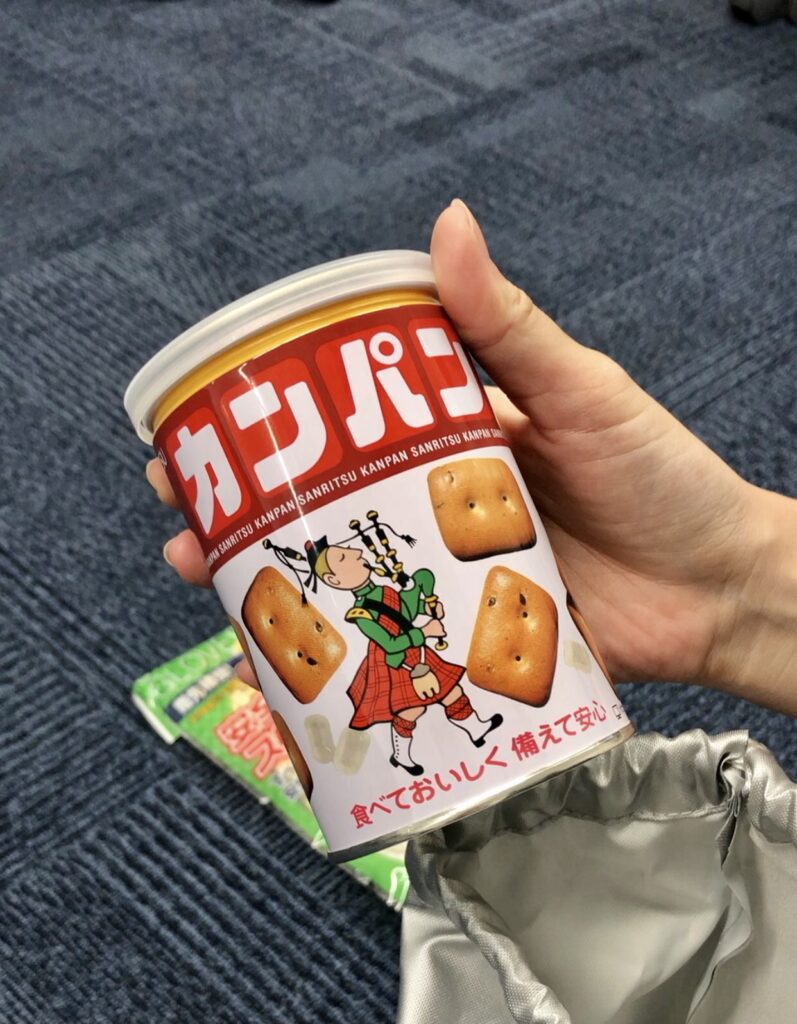
Dried Bread / Crackers 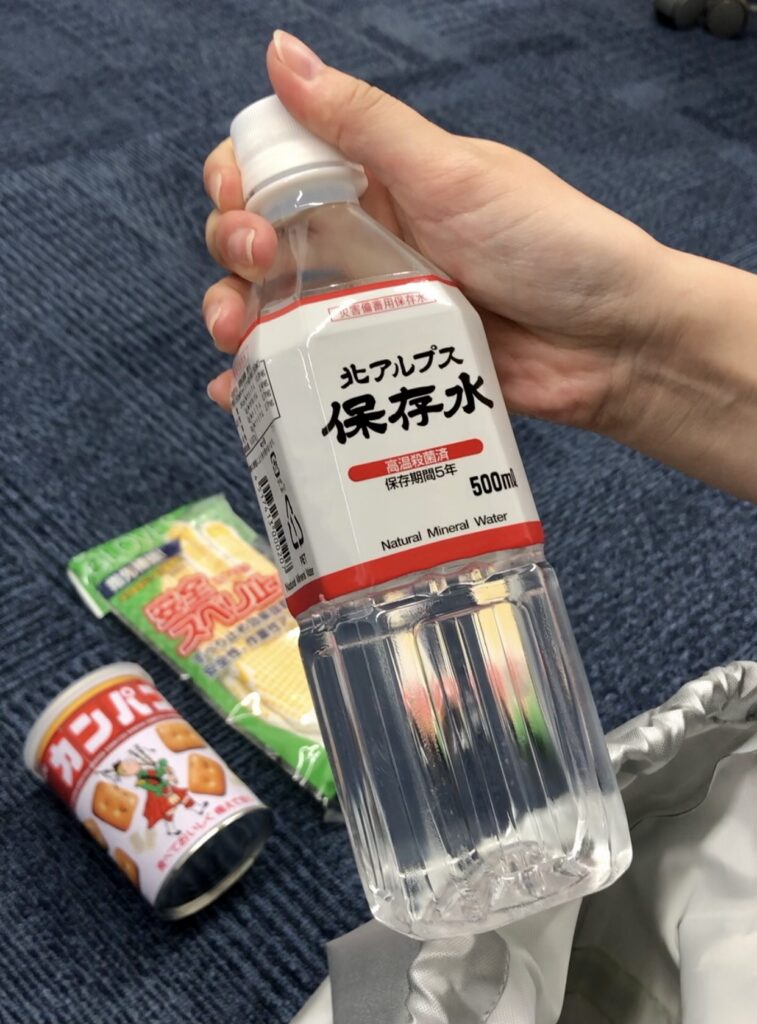
A Bottle Of Water
Some dry food and water is extremely important. Make sure that the food is not expired and can last for a very long time.
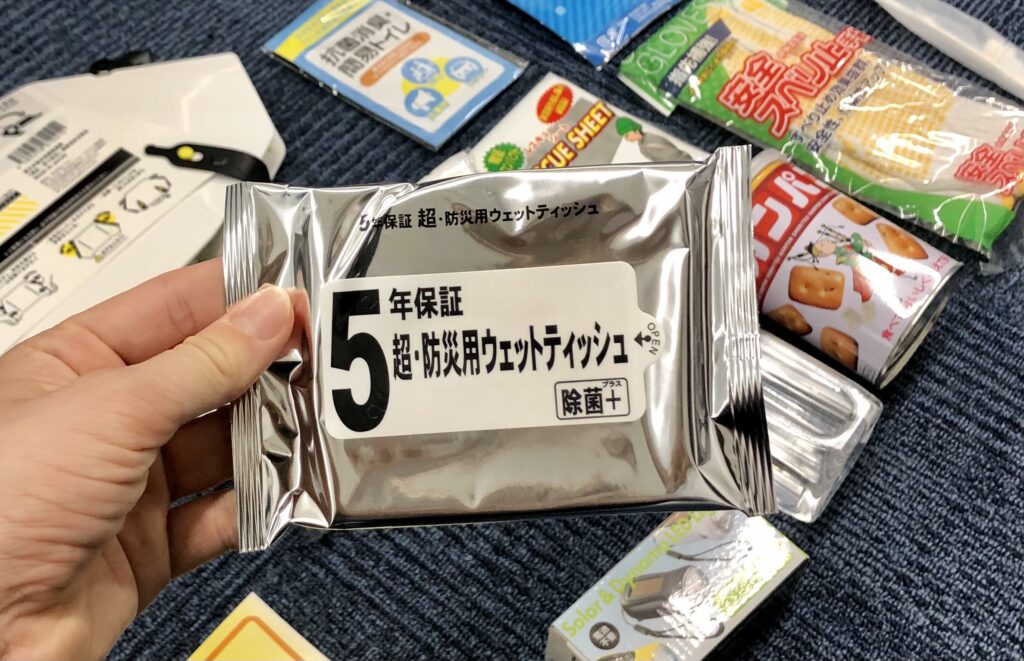
Wet Tissue 
Dry Tissue
It says “5 year warranty” on the west tissue package which I think is very questionable but impressive.
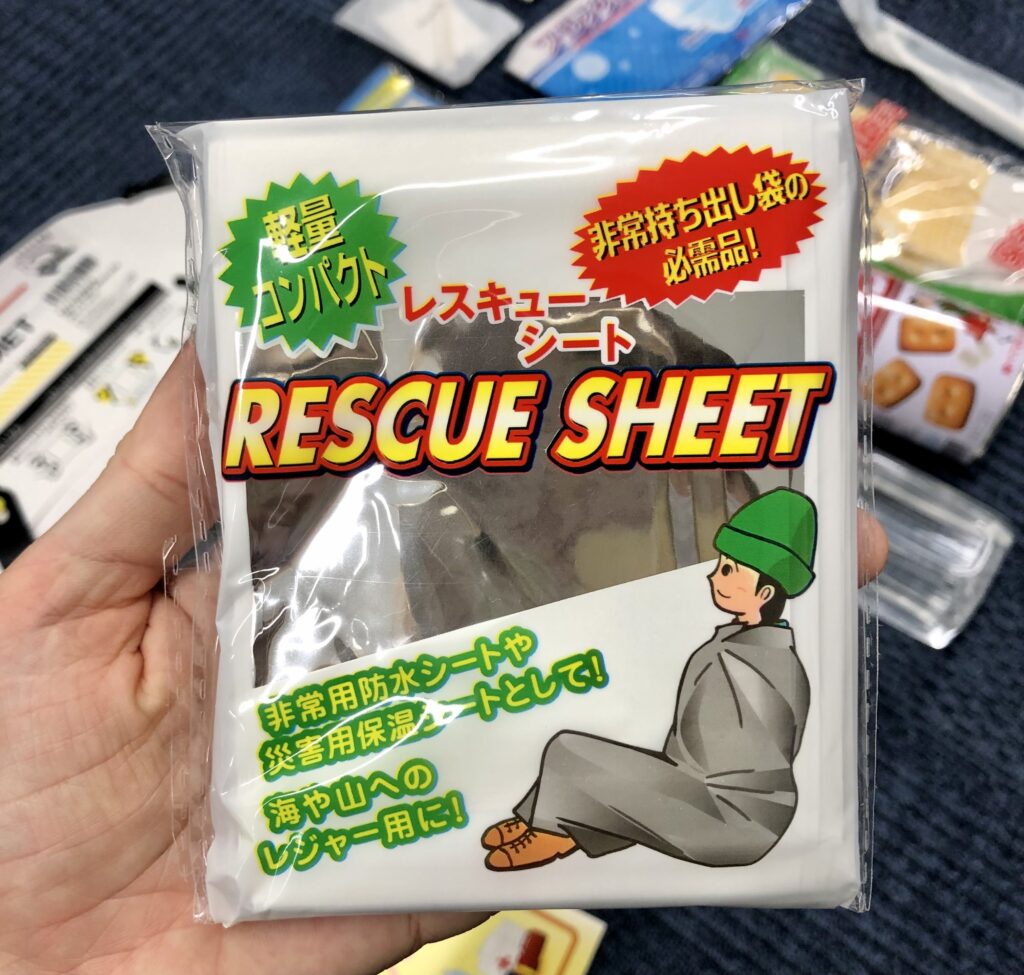
Rescue Sheet 
Polyester Rain Poncho
The rescue sheet will keep you warm in cold climates when you don’t have access to blankets or heaters. The rain poncho will keep you or your stuff dry incase it rains.
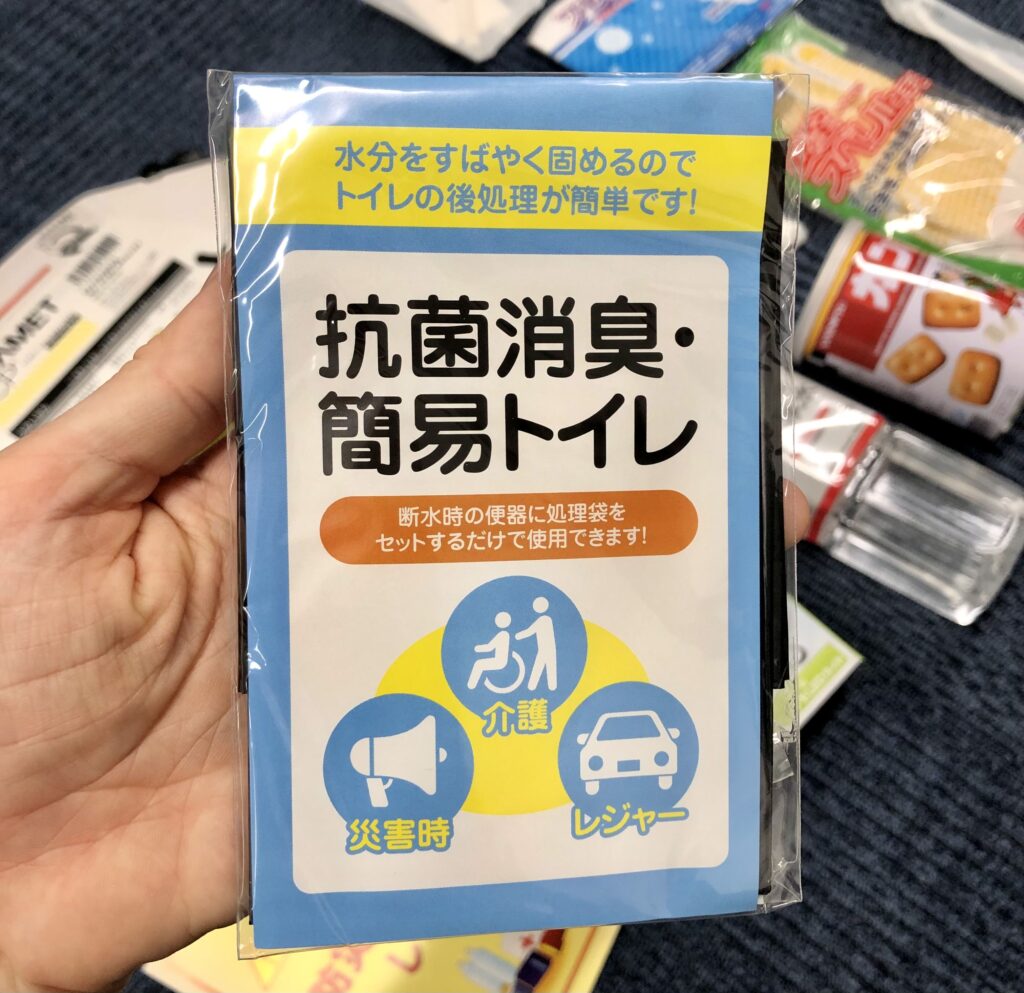
Emergency Portable Toilet
This is extremely important because you never know what your circumstances will be like during a natural disaster evacuation.

Tooth Brush & Paste Travel Set 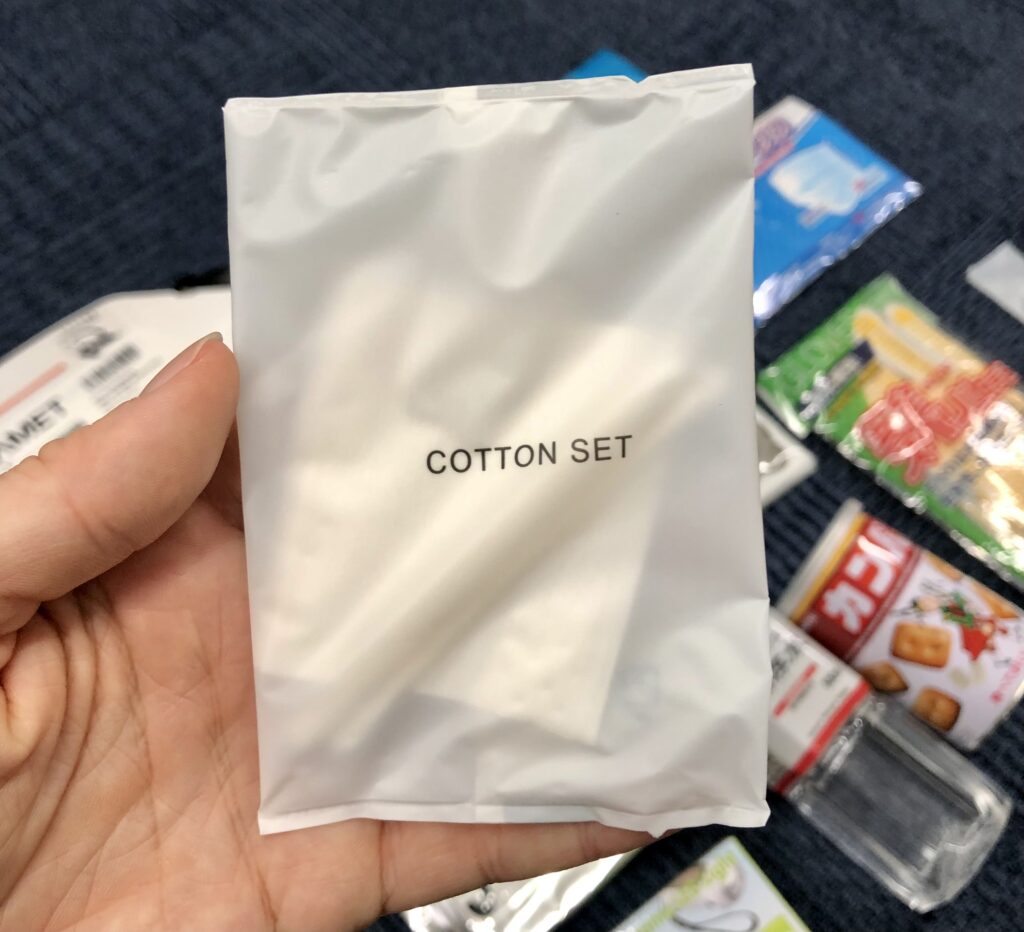
Cotton Travel Set
You never know how many days you will have to be away from home, and having fresh breath makes the situation less dreadful, believe me.
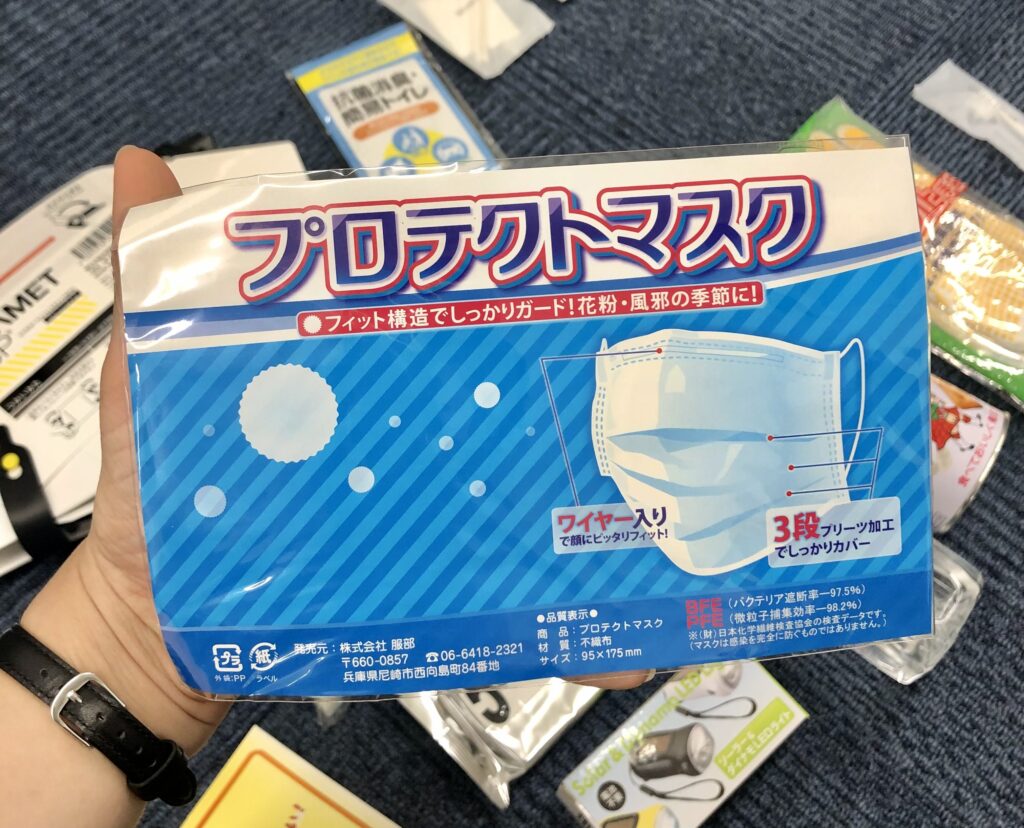
Face Mask 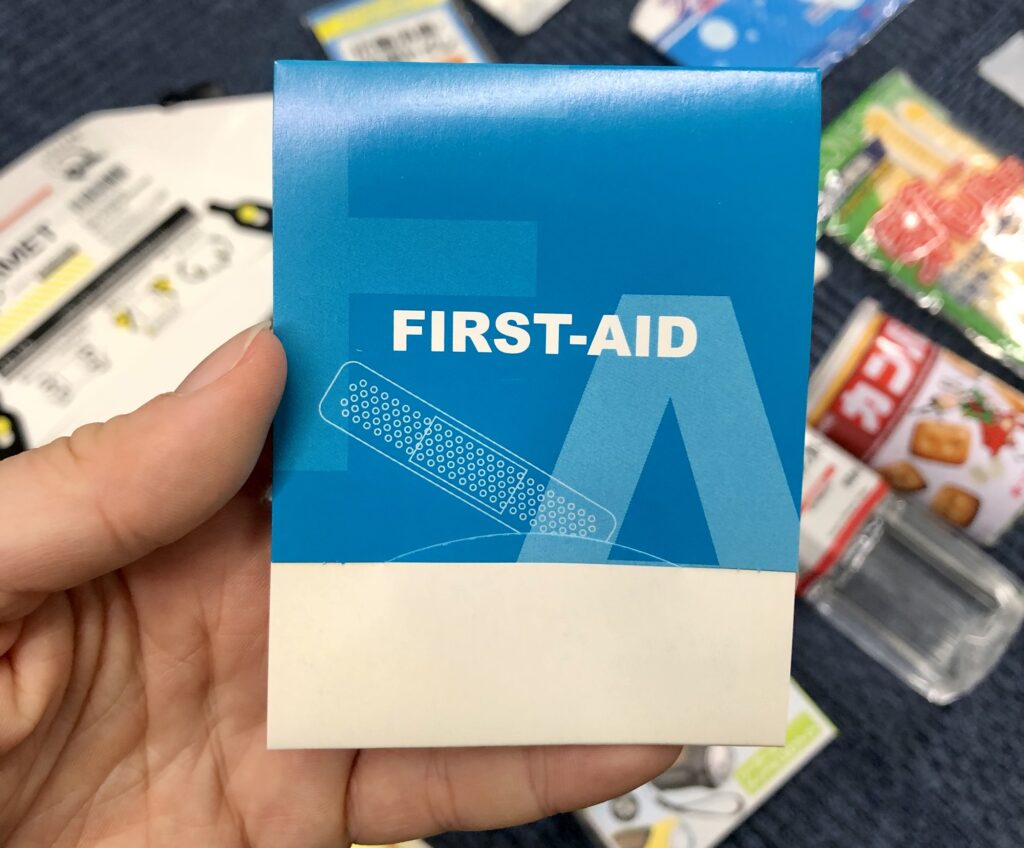
Small First Aid Kit
You will likely have to share an evacuation center with many different people and most of the time it can become quite cramped. Having a mask to protect yourself from potential sickness, or dust and pollution is very important.
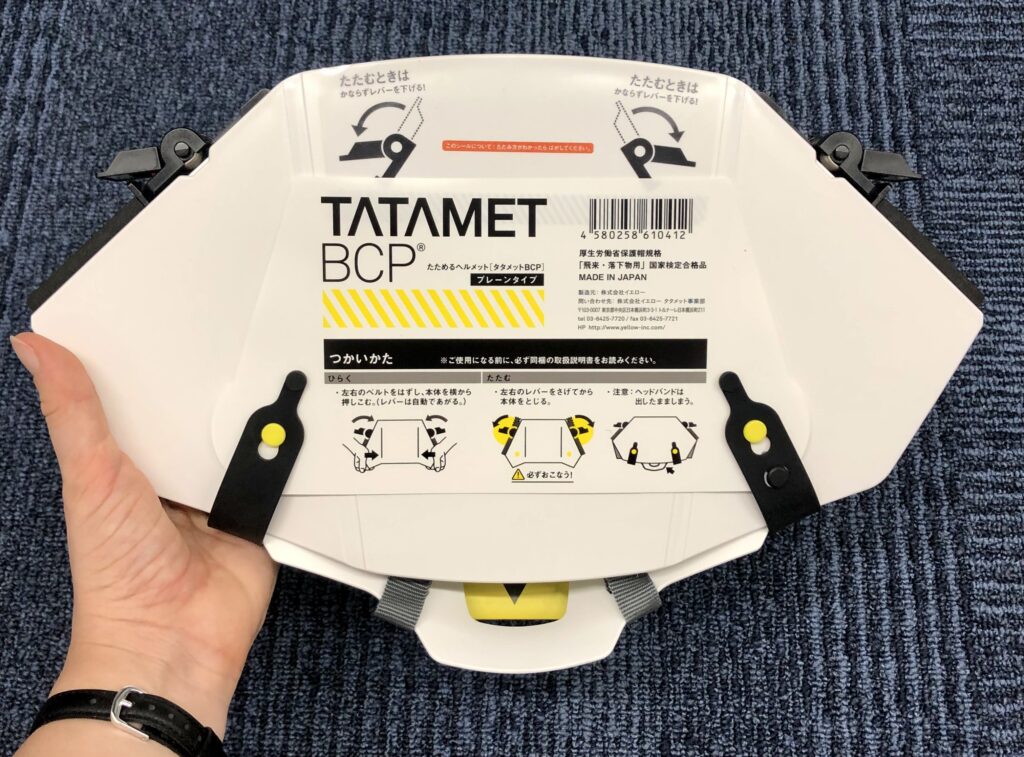
Foldable Emergency Helmet
I am extremely impressed with this one and thought it was genius. Helmets can become a life-saving item in situations or unstable surroundings resulting from a natural disaster.
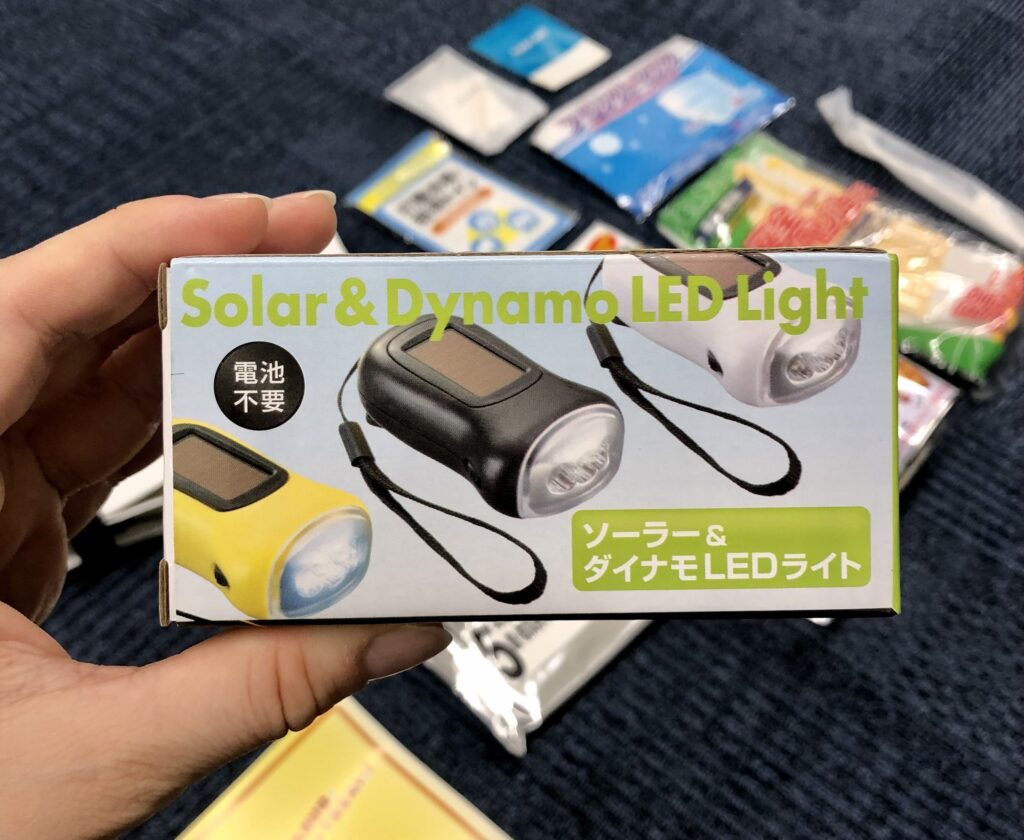
A Flashlight That Does Not Power On Battery
The flashlight I found in this bag is powered using solar energy. Flashlights are extremely important to safely navigate during dark hours or inside dark places.
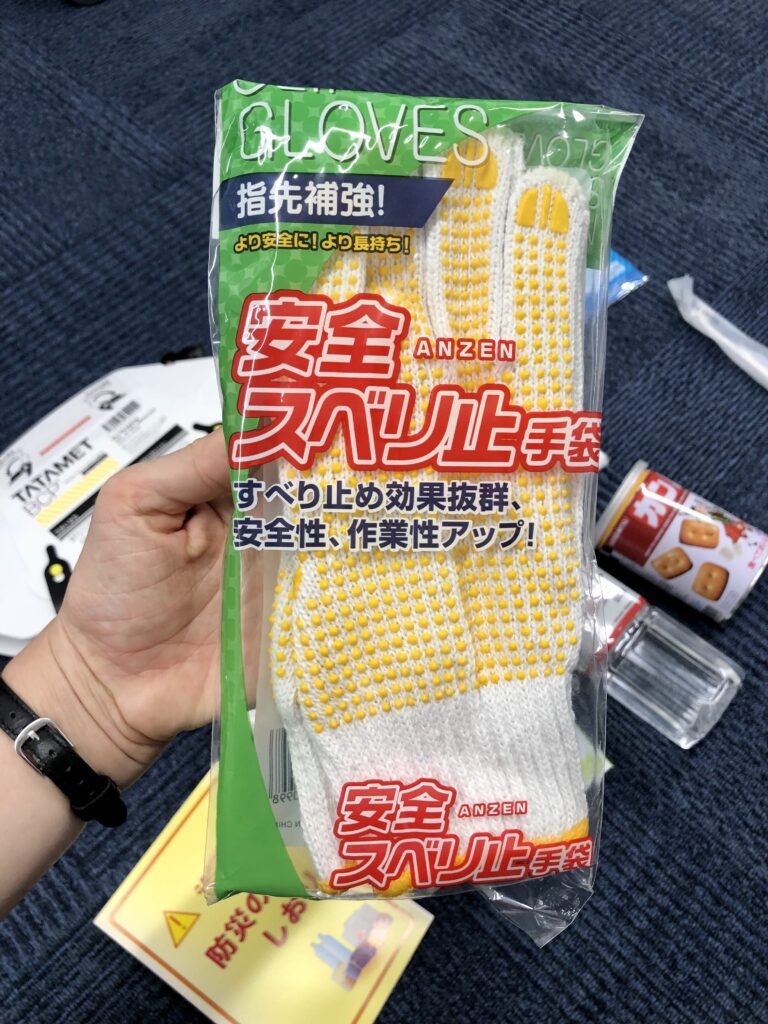
Anti-Slip Safety Gloves
You never know how your surroundings will become after a natural disaster so it is smart to have safety gloves with you incase you have to encounter dangerous objects such as broken glass etc.
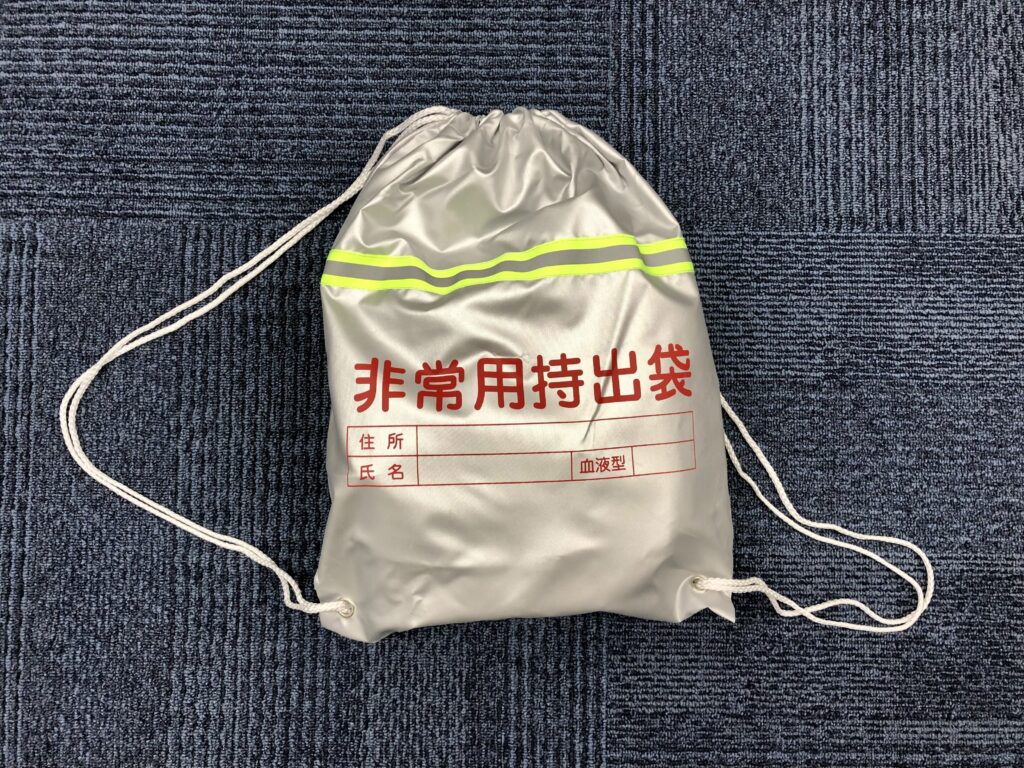
Emergency Bag 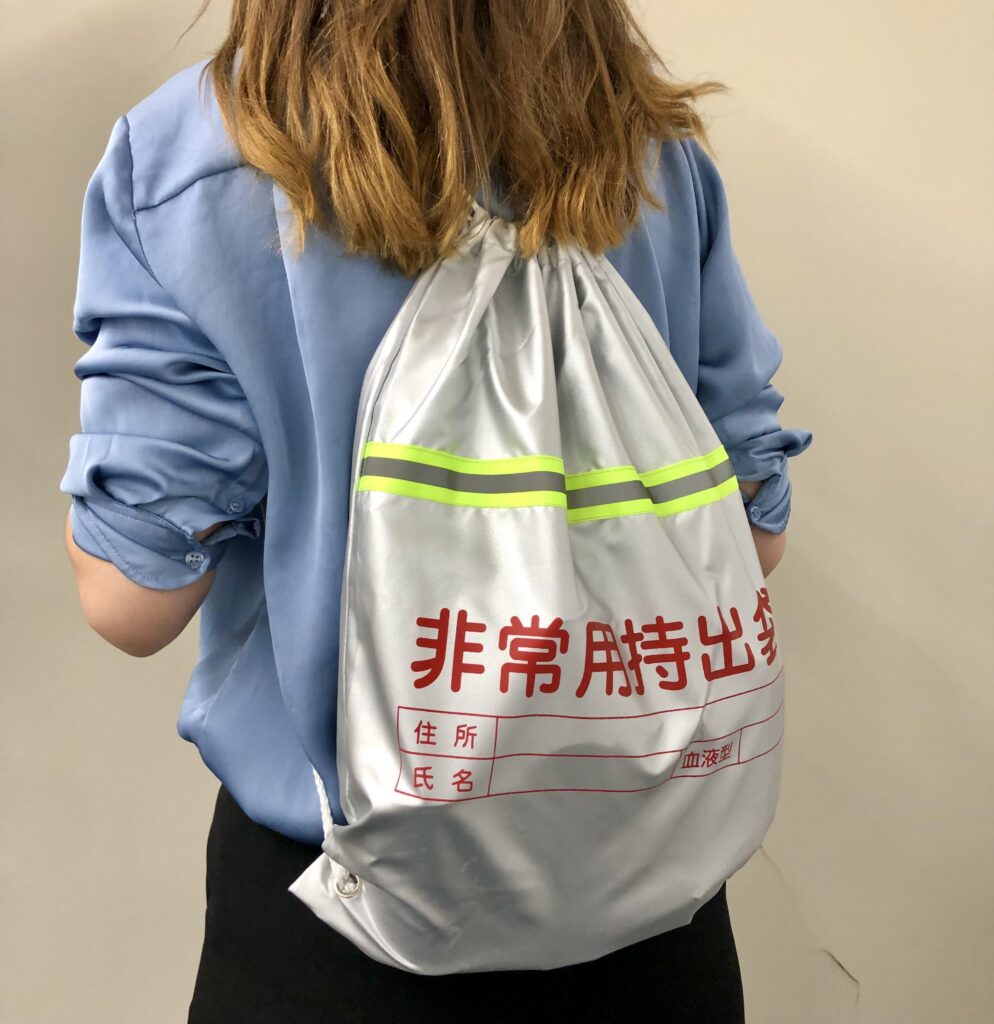
Emergency Bag As A Backpack
(I’m ready to escape)
What I thought was very smart is that on the emergency bag, there are blocks for you to write your address, name, and blood type.
Here are examples of some other items that might become handy during emergencies.
For example, a radio, some cash, vinyl sheet, polyester tank or something for storing water, thermos, whistle, wraps and aluminum foil, candles, ropes, paper plates and cups, towel, blanket, utensils.
⭐Did you know?
In Japan, September 1st is Disaster Prevention Day or (防災の日) (Bo-sai-no-hi).
On this day, people gather to take preventive measures and prepare for natural disaster emergencies all over Japan. Activities include disaster drills, emergency bag checks, and learning about natural disasters that happened in the past etc.
Have you experienced an earthquake in Japan yet?
If so, let us know in the comments how the experience was for you!
See what you can get at 7/11 in Japan!
LATEST CONTENTS
- How to meet Geiko and Maiko in Kyoto
- Japanese Manners List: Do you know your manners??
- Elevator Manners In Japan: 5 Things You Should Know
Enjoy Kansai with KTIC
Tourist Information / PASS / WIFI / Day Tour
Kansai International Airport (KIX) T1
Open Everyday 9.30 – 17.30
Kyoto Tower 3F
Open Everyday 10.00 – 17.00

